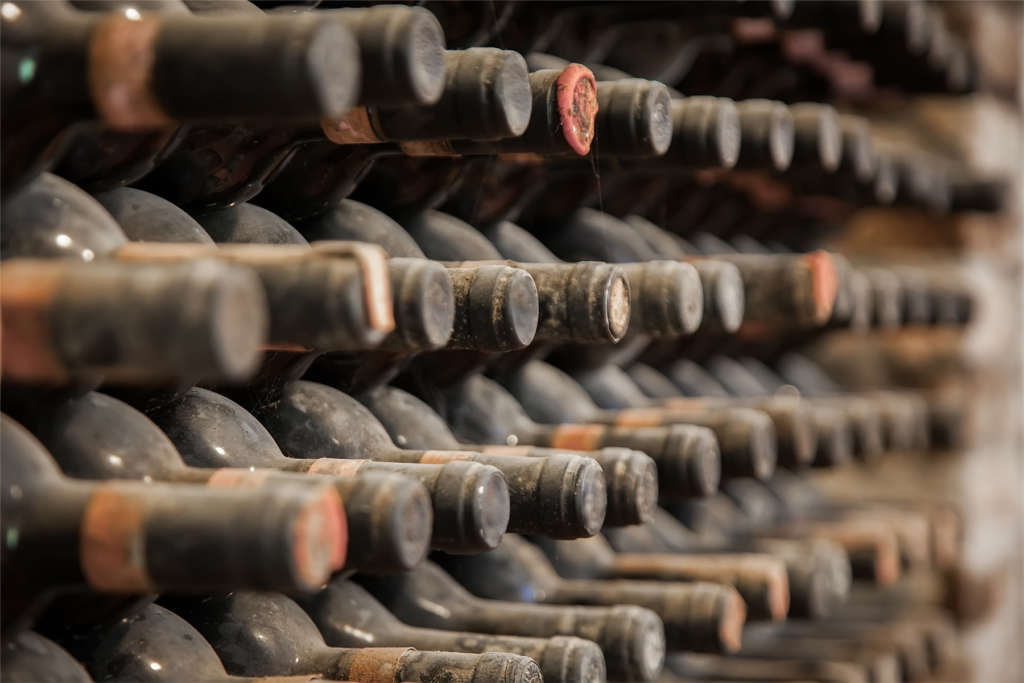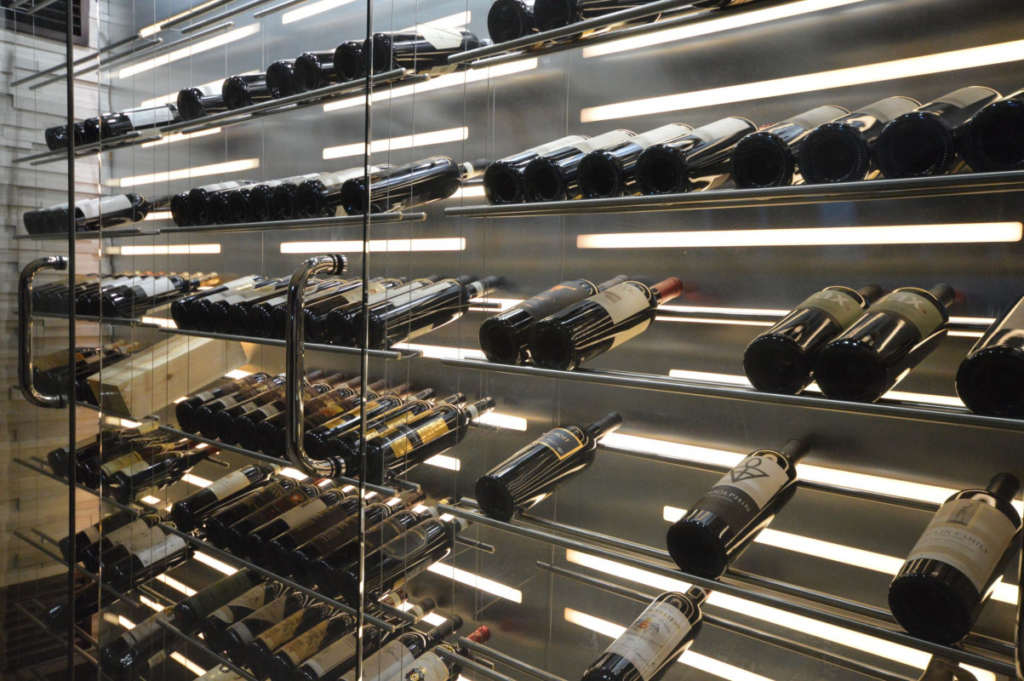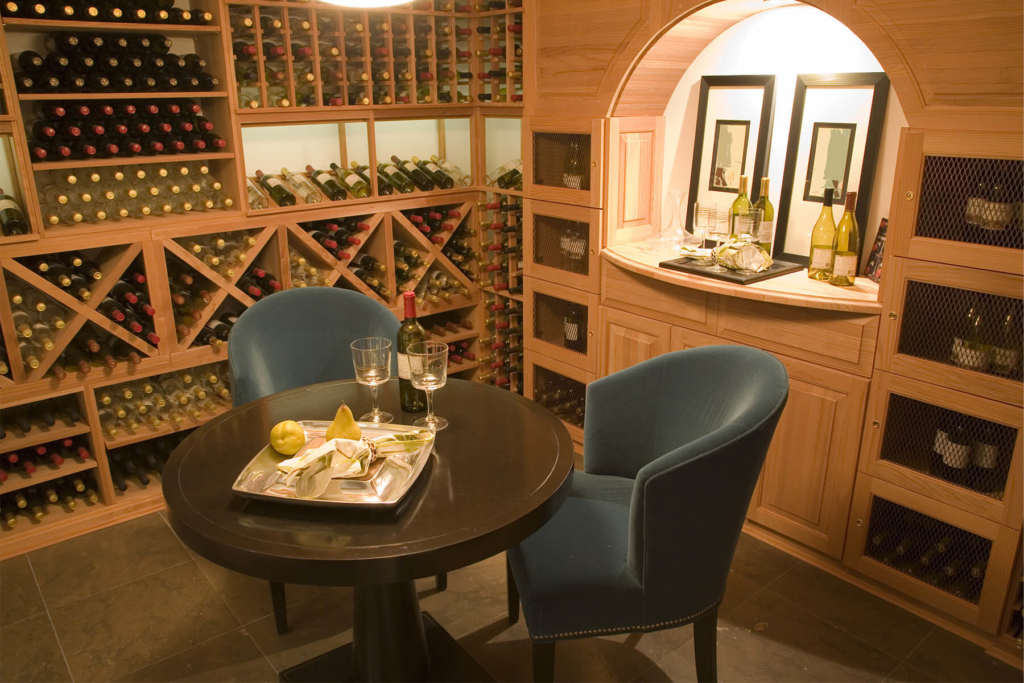What is the right temperature to store wine?
What is the best temperature for storing wines? There’s actually a range of acceptable temperatures. In addition, other factors such as humidity and even lighting can have an impact on the storage environment. Finding the sweet spot for your collection depends on your unique situation and needs!
Not too hot, not too cold, but just right: Let’s explore a few variables that will help you determine the storage solution that puts your wine in that proverbial Goldilocks Zone.

Temperature
The most important quality of wine storage is its consistent internal temperature.
Wine does not do well in extremes. A warm environment can actually “cook” or oxidize, leaving the wine tasting burnt and flat. Too cold an environment, and the chemical reactions that foster aging slow down. Dramatic fluctuations in temperature can also cause a wine to expand and contract, dislodging the cork and increasing its chance of leakage.
So, what is the best temperature to store wine? Before the advent of HVAC, below-ground rooms and cellars averaged 55°F (13°C), with minor seasonal fluctuations. Recommendations range from as low as 45°F (7°C) to as high as 65°F (18°C) but most collectors choose the midpoint.
Where your cellar falls on that spectrum is a matter of personal choice. For example, if you prefer to serve your red wines right out of the cellar, you may consider raising the temperature, to around 60°F (16°C). If your space doubles as a humidor, you might adjust the temperature even higher, for the sake of the cigars.
More important than the actual temperature is consistency. The less fluctuation, the better. That means you’ll want a cooling unit that delivers rock-steady performance. Browse our catalog of wine cellar cooling units to learn and compare.
Humidity
If wine storage temperature is the most important factor, humidity is second in that equation. Proper humidity keeps wine corks hydrated and sealed so your wine ages slowly.
Again, we’re talking about a range here, between 60%-80% humidity. Too low and you risk dry corks and oxidized, spoiled wine. Too high and you’ll invite mold and mildew, which don’t necessarily hurt the wine itself, but can wreak havoc on a cellar. Once present, mold can be tough to remediate, permeating and staining wood features and even etching pits into metal. Even worse, it can ruin your wine labels, affecting your collection’s actual value. The ideal setting often depends on the relative environment you’re in. If you live in the tropics or the woods, you may require a lower humidity level. If you live in the Arizona desert, you’ll probably want to boost humidity levels. Read more about wine cellar cooling by region.
Lighting
There’s an old saying, “sunlight is the best disinfectant,” and for that reason, you don’t want your prized wines exposed to UV rays! Sunlight can break down the compounds in a wine, aging it before its time, and raising the wine’s temperature, thus cooking it.
Therefore, over the centuries, winemakers have learned to use colored glass for their bottles. And this is also why you won’t often see many exterior windows in a wine storage space.
Most interior lighting won’t pose a major threat to wine, especially if you’re turning the lights on occasionally or keeping them dim. In general, avoid intense incandescent bulbs or any fixtures that raise the heat and/or generate enough light to potentially fade your labels.
LED lighting is currently the most popular option because it doesn’t generate a lot of heat and the fixtures are compact, colorful and customizable too.

Vibration
Scientists are still learning about the effects of motion on wine. They theorize that vibrations, most often from a refrigerator’s compressor motor, can literally shake the sediment out of a wine over time. Some aficionados say it’s the opposite — that it can keep the sediment particles suspended, which will make a wine taste gritty.
In a professionally designed storage space with a wine cellar cooling unit, the refrigeration is detached and dampened to protect the wine from vibrations. The science may not yet be settled on this, but at the very least it’s one less potential threat to your wine collection.
Smells
Nobody wants their living space to smell funky; the same is true for your wine cellar. In fact, some odors, especially those coming from strong chemicals or mold, can permeate the fragile corks of older bottles and taint the flavor of the wine.
Obviously, if you have a wine room or tasting table in your cellar, the space should be as odor-free as possible to best enjoy all the aromas and flavors in the wine itself. If you can taste the room you’re drinking in, that’s probably not a good sign. Wine cellar builders recommend keeping your storage space clean by wiping down walls and racks with a light solution of warm water and white vinegar, at least once a year. Check all drains, filters and drip trays to make sure they’re not clogged or harboring mold.

Racking
The preferred way for racking wines is to store bottles on their sides so that the wine is constantly in contact with the cork. Keeping the cork wet ensures that the wine bottle remains sealed and allows for a limited amount of evaporation.
But bottles needn’t be stored completely horizontal, according to wine expert Jancis Robinson. They can be racked at a slight angle, which still gives the wine enough contact with the cork while allowing the air to escape, rather than the wine.
The material used for racking is more a matter of personal choice and aesthetics. Racks are traditionally made of high-end woods like redwood and mahogany. But all manner of materials can be used, from stainless steel to glass to chrome, and even acrylic.
While there are no limits to the materials you can use for racking, some are superior to others. Keep humidity levels in mind and choose items that won’t be prone to mold or rot.
More Tips for Finding the Right Temperature to Store Wine
As you read through this, you may be picturing a traditional wine cellar in your mind. But that’s far from the only option. Check out our project gallery for some inspiration and to see the diverse possibilities. From traditional wine cellars to under-stairs storage and wine cabinets, you don’t have to sacrifice style or fun for performance.
And if you find all these choices overwhelming, we’re always here to help you choose the best setup for your needs. For the perfect combination of form and function, contact us anytime you need a consultation about wine cellar cooling units.

